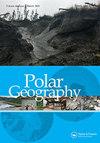加拿大北极水域水下文化遗产的“主权”:富兰克林探险沉船案例研究(1845-48)
IF 1.6
Q3 GEOGRAPHY, PHYSICAL
引用次数: 2
摘要
几个世纪以来,穿越西北航道激发了探险家和冒险家们的想象力。在冰封的北方开辟一条更短、更经济的贸易路线的想法,导致数百个国家和私人资助的探险队前往加拿大的北极地区。也许最著名的探险是英国领导的富兰克林航行,包括HMS Erebus和HMS Terror,这两艘船在1848年4月被困在冰中,被遗弃在维多利亚海峡。随后,数十支探险队被派去寻找这些船只,但直到150多年后,它们的残骸在加拿大北极的海底被发现,人们才再次看到它们。尽管最近英国将富兰克林沉船的所有权转让给加拿大政府,但本案例研究表明,确定沉船所有权的复杂性。基于对有关水下文化遗产的国际法律框架的文献回顾,记录了各种观点的主张和声明。在加拿大北极地区日益增加的海洋旅游活动,特别是游艇交通的背景下,必须作出努力,确保没有任何东西最终落入掠夺者和私人收藏家手中,他们在黑市上进行交易。本文章由计算机程序翻译,如有差异,请以英文原文为准。
‘Sovereignty’ over submerged cultural heritage in the Canadian Arctic waters: case study from the Franklin expedition wrecks (1845-48)
ABSTRACT Transiting the Northwest Passage captured the imaginations of explorers and adventures for centuries. The idea of a shorter and more economical trade route through the frozen North resulted in hundreds of state and privately financed expeditions to the Canadian Arctic. Perhaps the most famous of the expeditions was the British-led Franklin voyage including the HMS Erebus and HMS Terror, which in April 1848 became stuck in ice and were abandoned in the Victoria Strait. Dozens of expeditions were subsequently commissioned to find the ships, but they would not be seen again until more than 150 years later when their wrecks were found on the sea floor of the Canadian Arctic. Despite the recent transfer of ownership of Franklin’s shipwrecks by the British to the Canadian Government, this case study illustrates the complexity of the identification of ownership over shipwrecks. Based on a literature review of international legal frameworks regarding submerged cultural heritage, claims and statements of various perspectives are documented. In a context of increasing marine tourism activity, in particular pleasure craft traffic, in the Canadian Arctic, efforts must be made to ensure nothing ends up in the hands of looters and private collectors who trade them on the black market.
求助全文
通过发布文献求助,成功后即可免费获取论文全文。
去求助
来源期刊

Polar Geography
GEOGRAPHY, PHYSICAL-
CiteScore
5.30
自引率
0.00%
发文量
13
期刊介绍:
Polar Geographyis a quarterly publication that offers a venue for scholarly research on the physical and human aspects of the Polar Regions. The journal seeks to address the component interplay of the natural systems, the complex historical, political, economic, cultural, diplomatic, and security issues, and the interchange amongst them. As such, the journal welcomes comparative approaches, critical scholarship, and alternative and disparate perspectives from around the globe. The journal offers scientists a venue for publishing longer papers such as might result from distillation of a thesis, or review papers that place in global context results from coordinated national and international efforts currently underway in both Polar Regions.
 求助内容:
求助内容: 应助结果提醒方式:
应助结果提醒方式:


